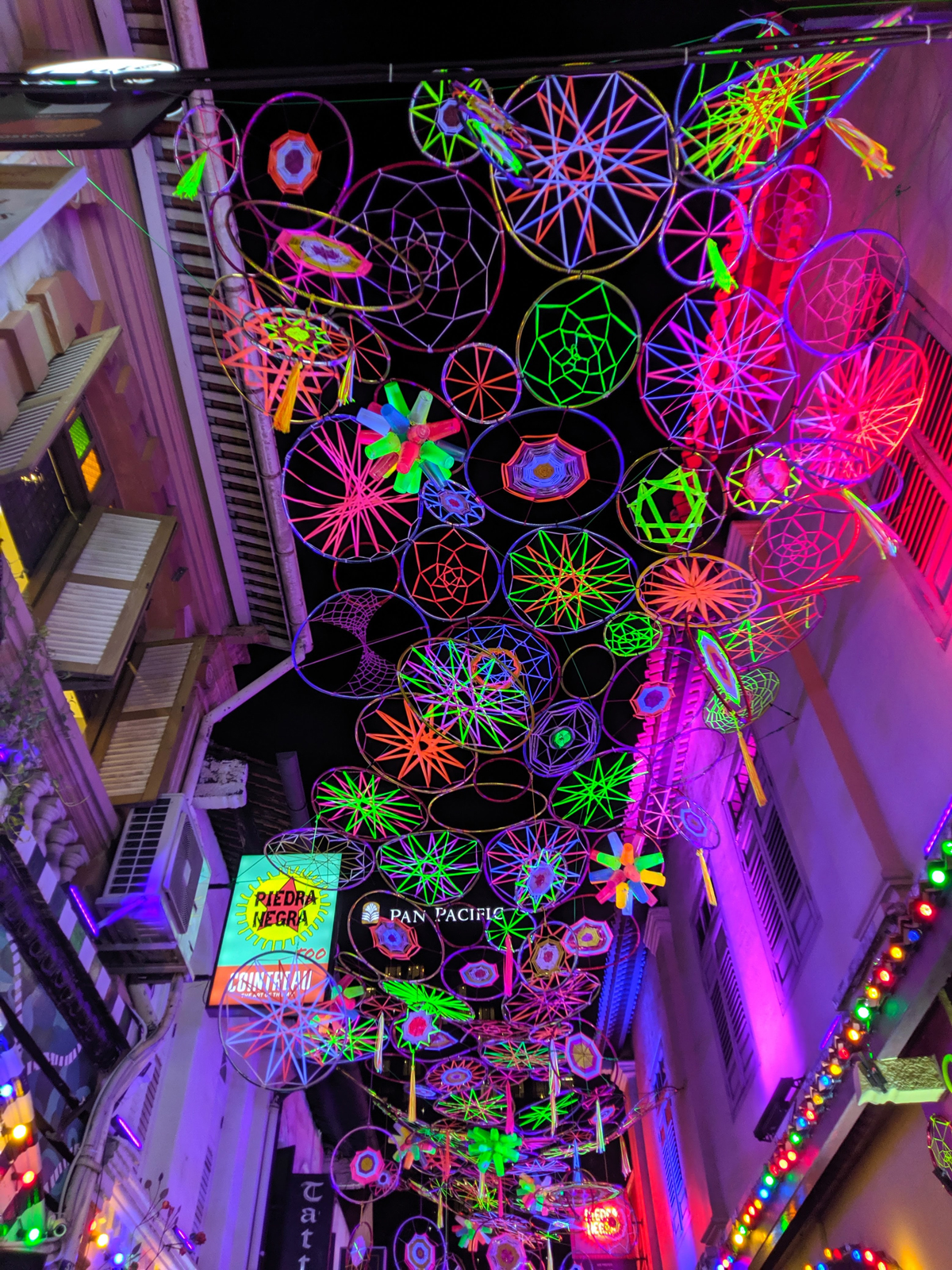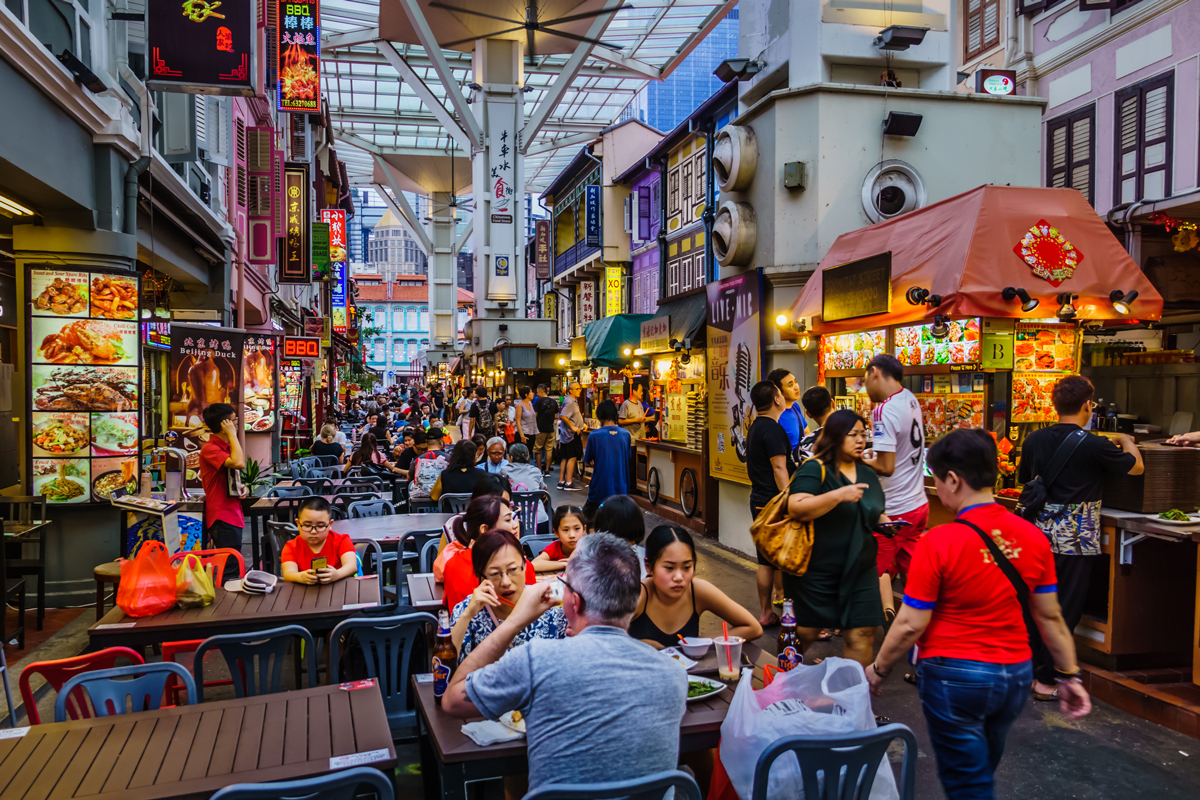Dr Rimi Khan, Senior Lecturer | 5-min read
The Singapore Airlines safety video distracts us from impending doom with a tourism advertisement. We are reminded to save ourselves before others, at the same time as we are soothed by images of Haji Lane and the Peranakan museum. Take your Covid-19 face mask off before you put on your oxygen mask. Have a great trip.
I am moving to Singapore to start a lecturing role as part of the new Masters of Arts and Cultural Entrepreneurship (MA ACE) programme at the National University of Singapore (NUS). I know the role that culture plays, as a social balm, a prescription for wellbeing, a source of enrichment, a site of pleasure, money-making, and community-making, especially in case of emergency.
As I prepared my move I was confronted with ‘advice’ (mostly preconceptions and clichés) about Singaporean culture: life is good but sterile; it is fun if you like following the rules; a great place to live for a short while. It is Asia, but not Asian enough. Such stereotypes reveal our own expectations of what Asia should be and, especially among non-Asians, contradictory desires for Asia as chaotic, cheap and efficient and futuristic. They also highlight the tensions between the Singapore that exists for the gratification of tourists and the Singapore that is seen as a place of opportunity and aspiration for its residents.

The Singapore government has long been aware of the way that national identity is constructed through the arts and culture. Images of nations and cities are constructed, circulated, sold and consumed via cultural policies, tourism strategies, street life and digital media platforms. In Singapore, like in many other countries, ‘culture’ has been mobilised as part of nation-building strategies for decades (Chong 2016; Kong 2012). Arts and education policies form part of a toolkit for cultivating its citizens, even though the arts are inherently contradictory: art can be useful (as an instrument of identity-making or social cohesion), but it is also associated with freedom and critique (Yue 2007).
I lived in Singapore as a child. My father was briefly an academic at NUS and I am back here after decades in Australia and a stint in Vietnam. I am a perpetual migrant, also Asian and not Asian enough. Returning to Singapore, I realise I have become Evelyn from Everything Everywhere All At Once. I eat a bánh xèo on Circular Road and speak to the waiter in bad Vietnamese. The scene around me fractures as I remember this happening to me in London a few months ago. Which part of the multiverse did I just land in? I catch fragments of Bangla in the air. The next day I eat egg fried rice in a Cantonese restaurant while The Godfather soundtrack warbles in the background.
Scholars have long been writing about the ways that communication technologies have compressed space and time; theories of globalisation (Appadurai 1996; McLuhan 1962), and the politics of speed in late capitalism (Virilio 2006) help us to understand this acceleration of experience and difference. These flickering realities remind me of how creativity functions as a set of spatial and temporal practices that draw on cultural memory, exchange and adaptation. Hawker centres, now protected by international cultural policy, are a form of time travel; the preservation of the past through the commodification of the present, an effort to sustain ‘heritage’ for the future.

As a researcher, I am interested in how intersections between creativity and economy produce different realities. Creativity has been linked to the notion of ‘emergence’—the idea that culture is made up of ever-changing, interdependent networks that structure our relationships and give rise to the ongoing adaptation and renewal of human societies (Kagan and Hahn 2011). Creativity and imagination play a key role within these processes because they are generative. They create spaces for unpredictability in wider processes of social and cultural change. A new arts policy or a creative start-up can create ruptures in our social fabric.
The idea of the ‘creative industries’ as a specific object of policy-making emerged in the late 1990s in the United Kingdom. Around the world, governments now recognise the market value of creativity, broadly defined to include fashion, film, UX design, along with more ‘traditional’ arts—anything that produces intellectual property and has tangible, measurable economic impacts. However, the creative industries have other impacts. My own research has been interested in how creativity produces new social forms and helps us to envisage more sustainable futures. It is these understandings of the multi-dimensional social, economic and political reverberations of creativity that the MA ACE can bring its students.
Launching such a programme at NUS is significant because it contributes to the project of de-Westernising academic knowledge about the creative industries. There has been much critique of the ways that the Western ‘creative industries’ policy model has been transplanted around the world with insufficient attention to the local specificities and glitches it encounters in different places. What are the uses and possibilities for creativity in Asia, and particularly, in Singapore?
The MA ACE is a global space that can produce knowledge about the different scripts that creative enterprises might follow. Does Singapore really need more hipster brunch spots? Or are there other ways that we can imagine, and materialise, a more creative city? Research tells us that increasing numbers of young people today have to be flexible, adaptable and innovative in order to secure viable futures for themselves (Carbajo Padilla and Kelly 2019). These are lauded as ‘21st century skills’, but they do not always account for the ethical and practical challenges involved in universe (and job) hopping. Now that we can travel and learn together, we can decide the kinds of realities we want to produce, in ways that promote interdependence in times of economic, environmental and cultural upheaval.
References
Appadurai, A., 1996. Modernity at large: Cultural dimensions of globalization (Vol. 1). U of Minnesota Press.
Carbajo Padilla, D. and Kelly, P., 2019. Young people, precarity and global grammars of enterprise: Some preliminary provocations.
Chong, T., 2017. Arts education in Singapore: Between rhetoric and reality. SOJOURN: Journal of Social Issues in Southeast Asia, 32(1), pp.107-136.
Kagan, S. and Hahn, J., 2011. “Creative cities and (un) sustainability: From creative class to sustainable creative cities”. Culture and Local Governance. 3(1-2): 11-27.
Kong, L., 2012. Ambitions of a global city: arts, culture and creative economy in ‘Post-Crisis’ Singapore. International Journal of Cultural Policy, 18(3), pp.279-294.
McLuhan, M., 1969. The Gutenberg Galaxy. 1962. New York: Signet.
Yue, A., 2007. Hawking in the creative city: rice rhapsody, sexuality and the cultural politics of New Asia in Singapore. Feminist Media Studies, 7(4), pp.365-380.